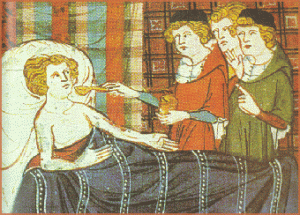Here is the rest of the conclusion of the “compassionate ministry” chapter draft from Getting Medieval with C S Lewis (the first part is here). Here we see more of how Lewis applied the classic medieval virtue of mercy in his own life, as well as how he accused modern materialists of forgetting that we cannot solve all of our problems by application of better and better techniques.
More concretely, Lewis was also lavish in his almsgiving. He said this on giving: “Giving to the poor is an essential part of Christian morality. I do not believe one can settle how much we ought to give. I’m afraid the only safe rule is to give more than we can spare. In other words, if our expenditure on comforts, luxuries, and amusement, is up to the standard common of those with the same income as our own, we are probably giving away too little. . . . For many of us the great obstacle to charity lies not in our luxurious living or desire for more money, but in our fear – fear of insecurity. This must often be recognized as a temptation.”[1]
Barfield, who was Lewis’s trustee as well as his friend, observed how Lewis followed this principle in his own life. “He gave two-thirds of his income away altogether and would have bound himself to give the whole of it away if I had let him. . . . There were substantial donations to charitable institutions, but what he really liked was to find someone through a personal connection or hearsay whose wants might be alleviated. He was always grateful to me for suggesting any lame dog whom my profession [as a lawyer] had brought to my notice.” (14) Nor did he worry about wasting his money on undeserving types. Instead, he reflected, “It will not bother me in the hour of death to reflect that I have been “had for a sucker” by any number of impostors; but it would be a torment to know that one had refused even one person in need.” Continue reading









 Medieval Wisdom for Modern Christians
Medieval Wisdom for Modern Christians






